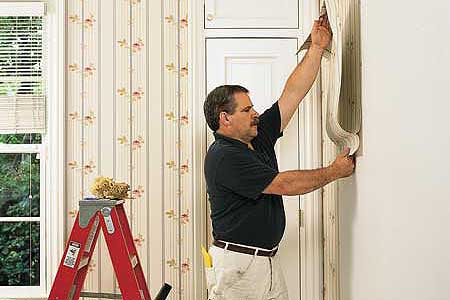Pasting patterned paper or wallcovering onto your walls gives a nicer finish than paint alone. It can take a while to master the technique, but quality wallpaper like a grasscloth wallpaper will look good for years.
Choosing the right paper
Let the design you prefer dictate your choice of paper; most modern papers are relatively simple to hang.
- Paper-backed vinyl is harder-wearing than paper alone, as it can be scrubbed with a soft brush and wiped with diluted mild detergent.
- Embossed and anaglyptic paper is designed to be painted over, in either emulsion or gloss. It is a good choice for uneven walls, as it will hide surface irregularities and is easily washed with mild detergent.
- Choose damp-resistant wallpaper for the bathroom and kitchen.
- If you are concerned about using the right amount of paste, choose ready-pasted papers. Simply wet the paper, by drawing it through water in the small trough supplied, and paste it to the wall.
- Avoid very thin paper; they may tear when you put them up and will probably not last as long.
Hanging wallpaper
- You’ll need a full day to paper an average-sized room.
- Read the hanging instructions printed on the back of the wallpaper roll label.
- Cut each strip with a safety margin for trimming and matching prints.
- To carry the wallpaper to the wall, fold the paper into a concertina-style, so that the pasted sides are facing, and then the unpasted, outside section is facing.
- Position paper up to the ceiling, leaving a couple of inches at the top for trimming, making sure any pattern is aligned. Line up the edges with a plumb line on the wall, and use a paper hanging brush to apply the top of the paper to the wall.
- When the top is straight, brush the bottom half of the paper into position, making sure it lines up with the
- plumb lines. Then go over the whole strip with the brush to remove any bubbles or wrinkles.
- If you find that you have bubbles or folds in your paper, do not be afraid to peel off the wallpaper and lay it again, in order to get it straight.
- Wipe excess paste off with a wet sponge (check in the instructions that this will not harm the paper).
- Repeat with adjoining strip, sliding it into place to match the pattern, if there is one.
- Trim the top and bottom once you have a few strips on the wall.
- On seams, don’t leave any gaps or overlap. Use a seam roller to firmly apply the paper to the walls, rolling over the seam once or twice at the most.
